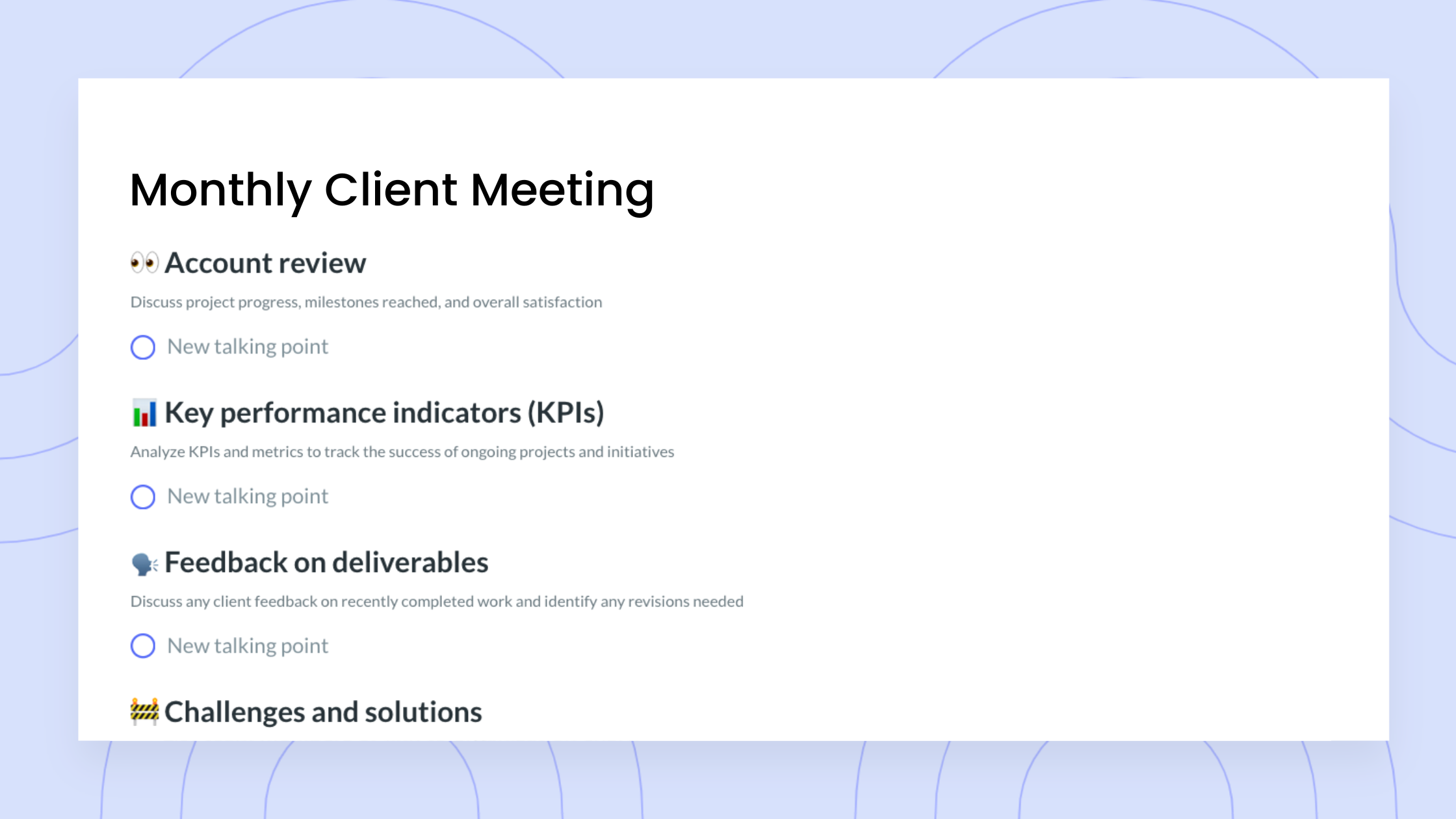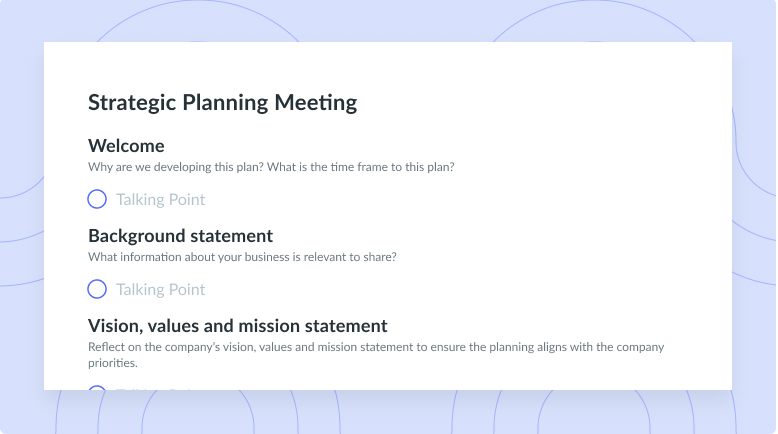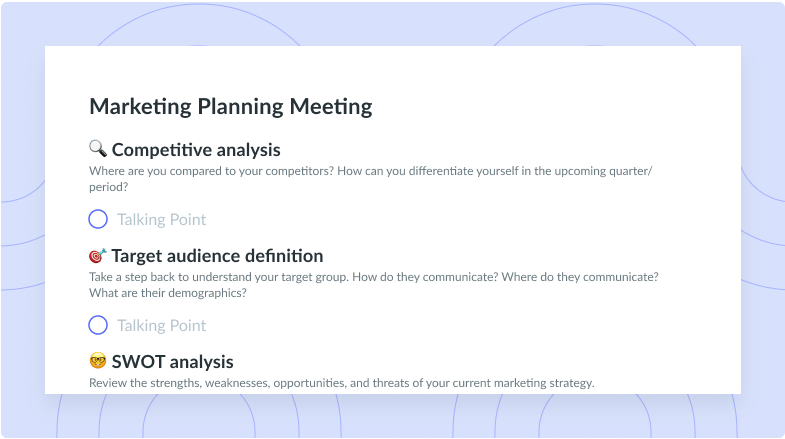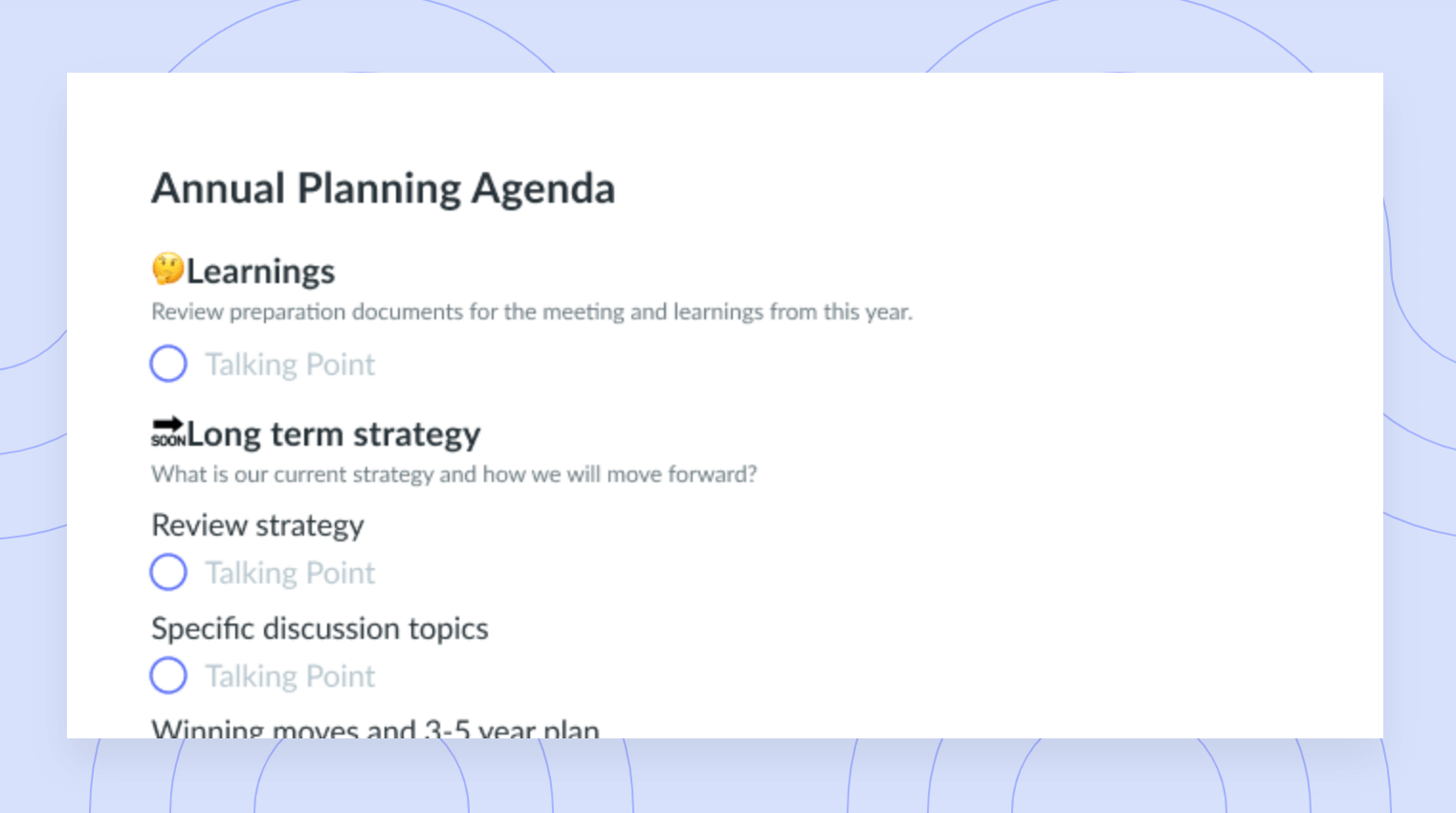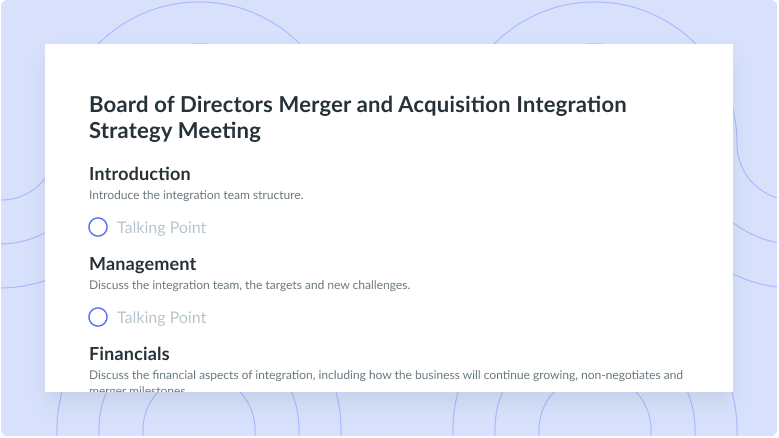Mastering Succession Planning: 8 Tips
Take a proactive approach to talent management and development by succession planning. Here are 8 effective tips!
You never know when you’re going to lose a key player within your organization. Whether it be because they’ve found a better opportunity elsewhere, they’ve chosen to step down, or they’re filling a different role within the organization, it’s never easy to replace a talented employee. Succession planning is a proactive approach to talent management and creating a succession plan means you’ll never have to do without a talented roster of qualified candidates that can fill a leaving employee’s place. Keep reading to unlock 8 effective tips for succession planning!
What is succession planning?
Succession planning refers to identifying and developing talent that will grow within the organization’s ranks. This process involves creating a systematic approach that allows individuals within an organization to step into a leadership role when the existing member retires, graduates to a new role, or leaves the organization altogether. When done correctly, succession planning will help mitigate the risk of a talent gap, ensuring there are employees who are equipped to step into leadership roles.

Managing a team?
Take control of your team meetings by having collaborative meeting notes and encouraging accountability with action items. Try a tool like Fellow!

The benefits of succession planning
1Provides opportunities for career development
Succession planning involves identifying high-value employees who can be shaped into future leaders. By identifying high-value employees and equipping them with the skills and knowledge necessary to grow into management, succession planning creates a clear pathway for career development and growth. Not only do these career development opportunities prepare employees for future leadership roles, but they also equip them with transferable skills that will serve them in both internal and external roles for years to come.
2Increases employee retention rates
There’s nothing worse than working within an organization that doesn’t present opportunities to grow. Employees who feel stagnant are more likely to look for opportunities elsewhere, which is why it’s important to demonstrate a commitment to employee growth and development. When employees have the opportunity to grow within an organization, they’re more likely to stay motivated and engaged, making them less likely to seek external opportunities.
3Fosters preparedness
Being thrown into a role with no prior experience or preparation can be overwhelming and stressful. An organization that takes succession planning seriously will ensure that employees who are promoted internally have the skills and knowledge necessary to step into their new roles with confidence. This means being exposed to training, mentorship, and coaching opportunities that help develop problem-solving skills, critical thinking capabilities, and core competencies that are unique to the organization. By fostering preparedness, organizations can manage continuity while effectively placing employees in leadership roles.
4Promotes continuity
There are many ways succession planning promotes continuity. From helping employees transition seamlessly into new roles to ensuring a surplus of qualified talent, succession planning helps minimize operational disruptions and promote stability. This preparedness provides employees and stakeholders alike with a sense of confidence and reassurance that the organization is organized and prepared.
8 tips for effective succession planning
1Start early
The key to effective succession planning is starting early. You never know when an employee will step down, find a role elsewhere, or even retire. The key to mitigating this risk is preparing in advance. Taking a proactive stance to succession planning will ensure you always have a pipeline of qualified talent should you ever need to promote from within. It’s important to note that succession planning can’t be done overnight. It takes time to cultivate talent, so you can’t expect an employee to step up if they haven’t received the appropriate training. Starting early will ensure you have the time to equip your employees with the skills they need to succeed in a leadership role.
2Determine your succession employees
One of your first considerations when succession planning should be determining your succession employees. This means taking the time to determine which employees have what it takes to grow into a leadership or management role. It’s important to note that your succession employees should not be determined by a single evaluation and should instead be evaluated over time based on both performance and potential. Regular reviews, check-ins, and assessments should be conducted to ensure employees are continuously progressing.
3Be transparent about your intentions
Employees must know where they stand—whether this means being transparent about the fact that there aren’t any opportunities for them to progress into a leadership role, or letting them know you’re interested in helping them develop their skills further. Being transparent also allows employees to understand the experience and skills that are necessary to possess to move into a leadership role. This helps create a level playing field and ensures everyone has an equal opportunity to grow within the organization.
4Encourage professional development
Succession planning encourages professional development in many ways—like identifying high-performing employees, providing coaching and mentorship opportunities, exposing employees to leadership roles and responsibilities, and facilitating long-term career planning. After employees with potential have been identified, customized professional development opportunities, including training programs, job rotations, mentoring relationships, coaching sessions, and special assignments can be implemented.
5Avoid ageism
Ageism is real and, unfortunately, present in many industries. Ageism often occurs during succession planning as organizations tend to assume that older employees will age out or aren’t in it for the long haul when in reality, that couldn’t be further from the truth. All employees should be afforded the same opportunity, regardless of their age. To avoid ageism, you must implement non-biased systems that allow employees to participate and qualify equally. Succession planning should not be geared toward a group of employees specifically and instead must be equally accessible.
6Continuously share knowledge
If you want employees to grow and develop their skills, you must be willing to share knowledge. Successful organizations don’t gatekeep and instead make information readily available and accessible. For example, each week, Fellow’s marketing team hosts a marketing kickoff where participants are encouraged to share insights, key learnings, and updates. This provides teammates with a unique opportunity to learn from one another while making information readily accessible. Try out this free template and start sharing your knowledge today!
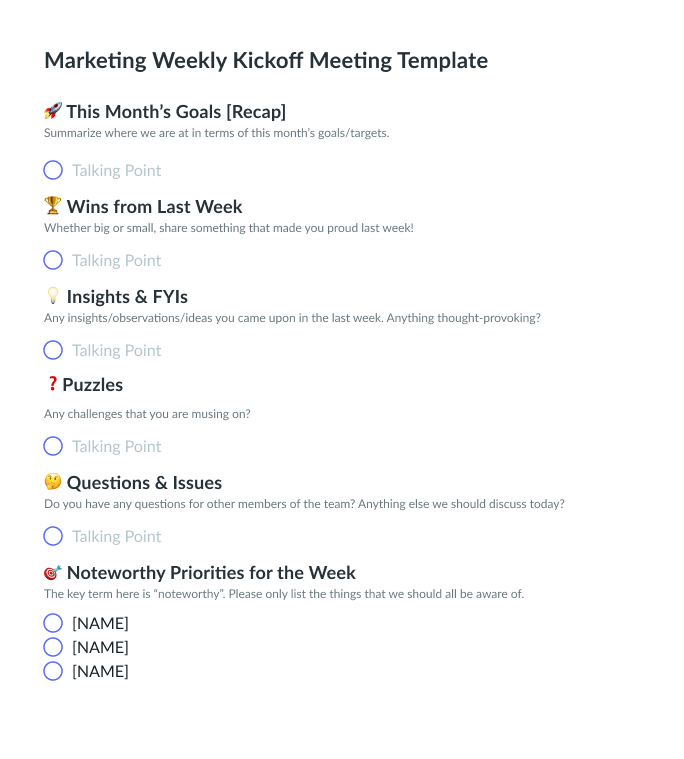
7Remain flexible
Succession planning is all about flexibility. You can create processes and systems to serve as guidelines, but the reality is no two employees are the same. To create an effective succession plan, you must remain flexible in your approach and cater each succession plan to the employee. For example, if you plan to fill a leadership role within your organization that requires a certain set of skills, you will have to create a succession plan that helps shape the incoming leader in a way that aligns with the criteria necessary to thrive within the role.
8Foster open communication
Fostering open communication is an incredibly important aspect of succession planning. Firstly, fostering open communication encourages employees to share their aspirations and goals, which can help inform the succession planning process. Secondly, fostering open communication creates an environment that facilitates knowledge sharing. This means senior-level employees or leaders who may be retiring can pass down their knowledge and create a culture of learning and growth. This helps encourage open dialogue and collaboration.
Did you know that you can create a collaborative meeting agenda with Fellow? Fellow’s meeting agenda software makes it possible to enhance communication through shared meeting agendas that can be used to assign action items and ask for meeting feedback. You can plan meeting agendas collaboratively by:
- Getting notified about upcoming meetings
- Encouraging attendees to add talking points to the agenda
- Checking off discussion points as the meeting evolves
- Adding comments and reactions to team member’s talking points
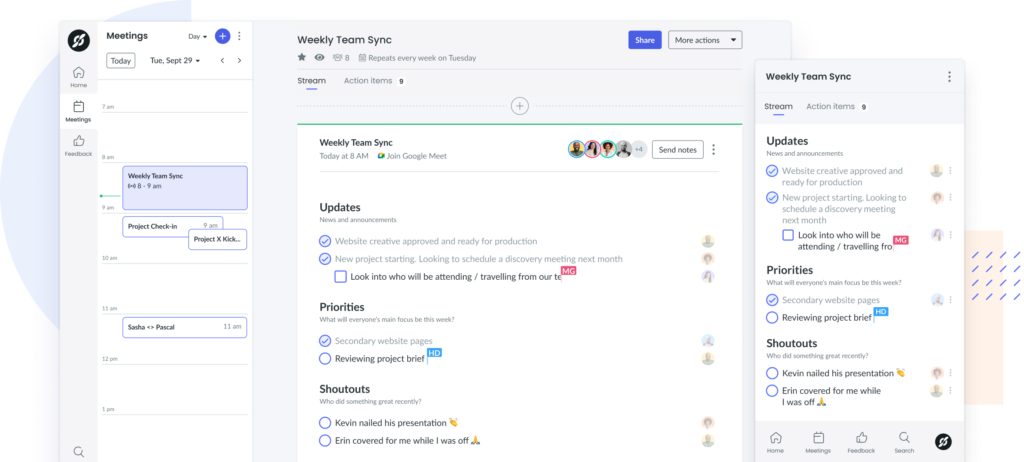
Are you ready to create a succession plan?
Whether your star employees are planning for retirement, quitting, or resigning, you need a succession plan. While succession planning may seem daunting or overwhelming, starting now will ensure you have a pipeline of qualified talent should the need arise. Considering the tips listed above when succession planning will ensure you can create an effective succession plan that sets your organization up for success for years to come.











